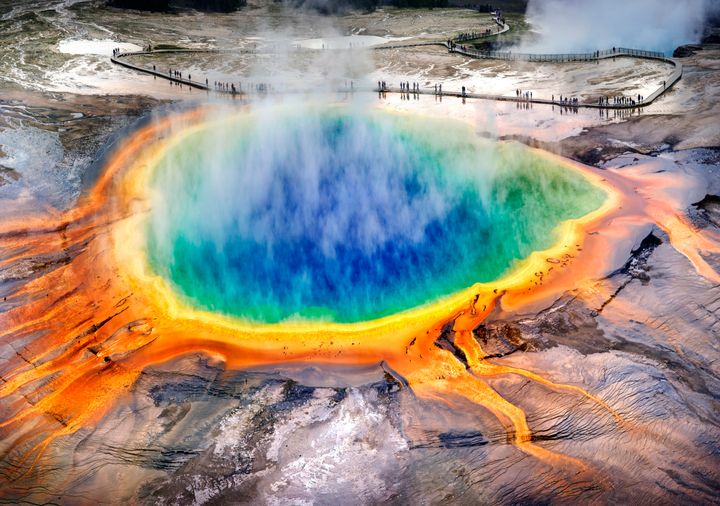Just in case you were hoping to have a relaxing weekend, we’ve got some unnerving news for you - the Yellowstone supervolcano could erupt far sooner than anyone had previously predicted.
The revelation came after a team of scientists from Arizona State University studied samples of ancient ash from the caldera, which measures 34 by 45 miles, showing that eruption-conditions will develop in a matter of decades.
It was previously thought we would have centuries to plan.

In order for the dormant volcano, which has not erupted for nearly 640,000 years, to wake up it would need to undergo a period of geological transition where influxes of fresh magma move into a subterranean reservoir chamber.
It was believed that after every eruption, this chamber was drained entirely, and then would slowly refill.
And scientists sensibly presumed that they would notice if this was occurring and we would then have hundreds of years of advanced warning to play with.
But like all those deadlines we think we have ages to play with, it has rather crept up on us.
As the new study has shown, the critical changes in temperature and mineral composition actually have a timeframe of tens of years instead.
To make things worse the chamber of molten lava is two and a half times bigger than we had originally believed (which totally isn’t terrifying).
Study co-author Hannah Shamloo, told The New York Times: “It’s shocking how little time is required to take a volcanic system from being quiet and sitting there to the edge of an eruption.”
Currently, the plateau is rising at approximately 0.6 inches per year, indicating that pressure in the magma chamber is rising.
Not that this means the supervolcano poses an imminent threat - in fact it is one of the most closely monitored sites in the world - and is not, contrary to some reports, well ‘overdue’ for a super eruption.
But the new insight does change how researchers can plan for an eruption at the Grand Prismatic Spring, which saw approximately 240 cubic miles of rock, dust and ash projected into the sky, when it last blew.
HuffPost reported in August that NASA had moved the Yellowstone supervolcano to the top of its threat list, because of the threat a volcanic winter that it would produce.
A volcanic winter would mean crops are not able to survive, and as the United Nations has warned food reserves would only last 74 days, the future wouldn’t be looking too promising.
